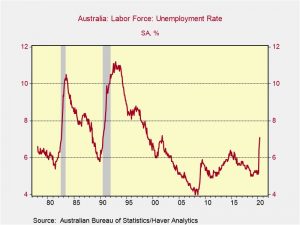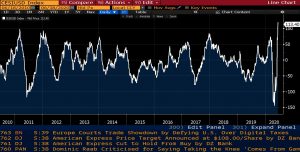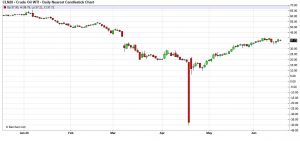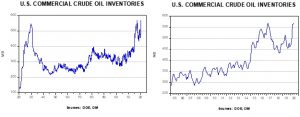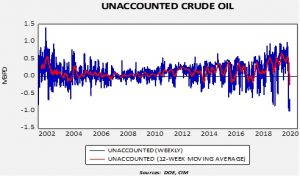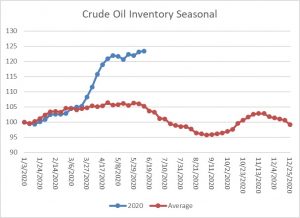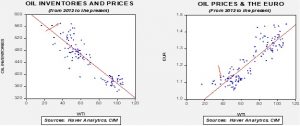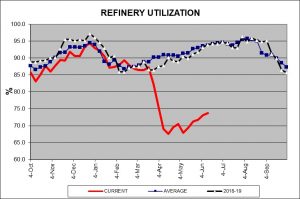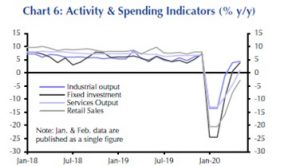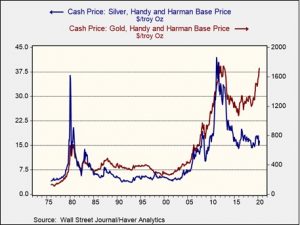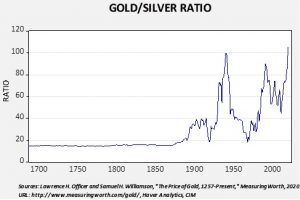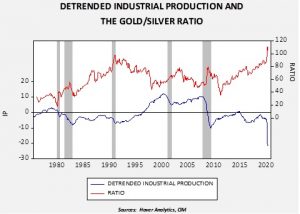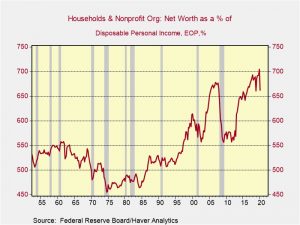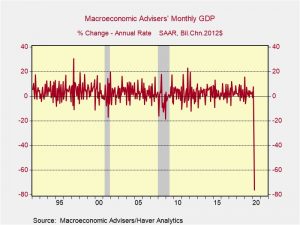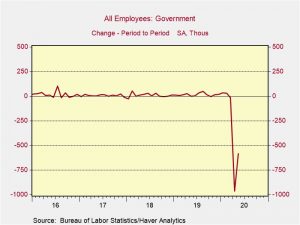by Bill O’Grady, Thomas Wash, and Patrick Fearon-Hernandez, CFA
[Posted: 9:30 AM EDT]
Good morning and happy Friday! U.S. equity futures are higher this morning as optimism over the economy continues to rise. China remains in the news. The forbearance being offered by lenders is having an adverse impact on the industry designed to deal with bad debt—bankruptcy lawyers and trustees, repossession firms, auction houses, etc. Our usual commentary on COVID-19 is available. Additionally, there are a couple of interesting market items. Here are the details:
China news:
- SoS Pompeo met with Yang Jiechi yesterday in Hawaii. Both sides have been mostly tight-lipped about the outcome; it appears that the U.S. and China stated their positions on various issues but if there was any attempt to find commonality, it isn’t obvious. Meanwhile, President Trump indicated the U.S. could still sever relations with China.
- Large changes create opportunities. As conditions change in Hong Kong, other nations are looking to provide a home for various businesses currently in the former colony. Japan is attempting to bring financial firms to Tokyo, for example. At the same time, as the U.S. considers making Chinese firms delist from U.S. stock exchanges, Hong Kong bankers are trying to get these firms to list in Hong Kong. Although only time will tell, it is possible that China will attempt to preserve Hong Kong’s financial power; as the U.S. leans toward closing off American financial markets from China, the Xi regime may need Hong Kong’s financial expertise. That doesn’t mean that the CPC won’t try to end democracy in Hong Kong, but it may give the financial industry wide latitude to operate.
- We continue to closely monitor the situation on the Indian/Chinese frontier. The leadership of both nations appear to be trying to contain nationalist fervor that could force escalation. China, due to its social controls, can generally manage such issues. India, on the other hand, has an active tabloid press and thus PM Modi will have his hands full trying to keep group emotions in check.
- One outcome from the border clash is that New Delhi may decide to join the West in dealing with China. India has traditionally avoided such arrangements. It was a key member of the non-aligned movement during the Cold War and tried to avoid joining either the Communist Bloc or the Free World. If the border issue leads to India joining the West, it will add to the encirclement of China and would be seen as a major loss for Beijing.
Policy news:
- One of the strengths of the U.S. system of capitalism is the ability to deal with failure. In Europe, going bankrupt could put a person in debtor’s prison; in the U.S., debts are written down and the debtor could start over. The U.S. system isn’t perfect, but it works remarkably well compared to other nations. An infrastructure has developed around bankruptcy and bad debt; there are law firms that specialize in bankruptcies. Towing firms engage in repossession; banks have workout groups. Auction houses specialize in selling off the assets that are repossessed. Firms clean up houses after evictions to prepare for sale or lease. All this activity forces creditors to quickly adjust the value of their loan assets and allows debtors to start over. Additionally, the repossessed asset then gets put back into the economy, usually at an attractive price, to find a new use.
- That process is mostly on hold. Despite rising bankruptcies on the horizon, at present, a set of policy decisions has effectively frozen the process. In many states, evictions have been postponed. Banks have been encouraged to offer debt service forbearance. If the current downturn is mostly a short-term phenomenon and all will return to normal soon, these actions make sense. However, if the recovery turns out to be long (as we expect), these policies will tend to keep debt backed by assets that have fallen in value in limbo.
- If policy prevents the process of foreclosure, as we see in China and Japan, it can lead to slower growth. At the same time, the bankruptcy process, much like insurance, isn’t designed for systemic events. In other words, the process works if bankruptcy is caused by poor management or bad luck for an individual; it doesn’t work as well if the bankruptcies are due to an event that causes widespread failure. That’s what we saw in the Great Depression; the policy of the Hoover administration was to liquidate the loans aggressively, but that led to a debt/deflation spiral that collapsed the economy.
- Policymakers seem to be leaning toward this event as systemic, so it has encouraged lenders to avoid immediate repossession and the Fed has been buying up corporate debt. The problem is that some of these loans are simply not going to get serviced and should be liquidated. Unfortunately, it is hard to discern who is facing a solvency issue and who is facing a liquidity issue. What we are doing works if it’s mostly the latter; it will create a Japan-like situation if it’s the former.
- There is a growing call for a better way to fund small business. Although the SBA exists, its lending doesn’t appear to be filling the need. So, there is some speculation that the Fed’s current program may become permanent.
- Our two cents? A better way would be to reduce consolidation in the financial system and support the expansion of small banks. Smaller banks seemed to do a better job of managing the PPP program; large banks do a good job with (a) massive loans to large borrowers, and (b) lending that is rules-based, like mortgages. However, larger banks can only make money on operations that they can scale up and making individual lending decisions by human loan officers isn’t in their “sweet spot.” That is a business that smaller banks can do more effectively.
- European nations are on their way to implementing digital taxes. This will exacerbate trade tensions.
COVID-19: The number of reported cases is 8,513,725 with 454,513 deaths and 4,181,443 recoveries. In the U.S., there are 2,191,200 confirmed cases with 118,435 deaths and 599,115 recoveries. For those who like to keep score at home, the FT has created a nifty interactive chart that allows one to compare cases across nations using similar scaling metrics.
Virology:
- One of the treatments for those infected is to infuse antibodies from blood plasma from someone who has recovered from the virus. A recent study suggests that giving plasma transfusions to someone in the early stages of the disease is safe.
- Europe is attempting to secure a vaccine when one is produced. It is talking to pharmaceutical companies to gain access to supplies when they become available.
- India is seeing a surge in cases.
- Sweden’s policy toward lockdown was much more liberal that most Western nations. The government’s position was that a vaccine was years from being developed, so it was better to learn to live with the virus and allow herd immunity to develop. This policy has been controversial. If a vaccine is available by this time next year, the policy could be considered reckless. There have been other issues as well; there are reports suggesting that the medical system was rather quick to allow elderly patients to be denied care for recovery. Additionally, neighboring nations are reluctant to open their borders with Sweden for fear of rising infections.
Markets:
- Japanese investors have been aggressively buying dollar assets in an attempt to capture a positive yield.
- Advisors to the ultra-high net worth households are encouraging these investors to hold more gold.



